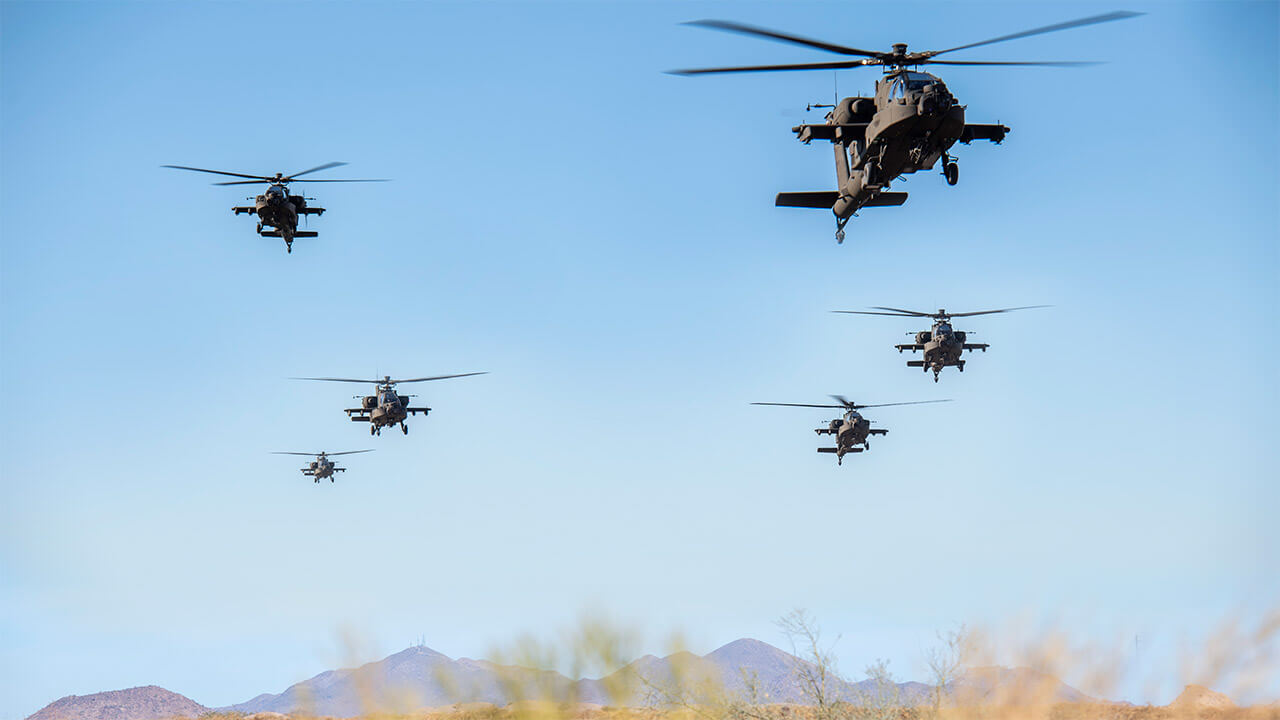When the first batch of Light Combat Helicopters (LCH) Prachand entered service with the Indian Army at Missamari in Assam in 2022, it was a quiet but decisive step toward rewriting India’s land warfare doctrine. Now, with the upcoming induction of six AH-64E Apache attack helicopters — the first three arriving in July 2025 — the Army’s dream of an independent air assault capability is beginning to materialise. Together, the Prachand and the Apache are shaping a new doctrine where the “air littoral” — the low-altitude airspace immediately above the battlefield — becomes an extension of land operations, not an adjunct controlled by another service.
Reclaiming the Air Littoral
For decades, the Indian Army has argued for control over its own tactical air assets — dedicated helicopters that can provide close air support (CAS), battlefield interdiction, and rapid mobility in forward areas. The argument has gained urgency with the changing nature of warfare, where precision, speed, and vertical manoeuvre define success.
The induction of the Prachand, developed indigenously by Hindustan Aeronautics Limited (HAL), is central to this shift. Deployed at Missamari, the first Army Aviation LCH squadron is focused on high-altitude operations in the Eastern Sector. Plans are underway to station another squadron in Ladakh — a region where the thin air and extreme terrain demand aircraft specifically designed for those conditions. The Prachand, with its twin engines, 5.8-tonne weight class, and operational ceiling above 16,000 feet, fits that bill perfectly.
Apache Edge and Complementarity
While the Prachand brings indigenous confidence, the American-built AH-64E Apache brings raw battlefield experience. The Army’s six Apaches, ordered separately from the IAF’s 22, are being tailored for land-based close combat — equipped with Hellfire missiles, Hydra rockets, and the Longbow radar system.
In the mountains, they will provide fire support and reconnaissance in tandem with the Prachand, while in desert warfare — particularly in the Western Sector — they will spearhead mechanised thrusts alongside tanks and infantry combat vehicles. This dual-theatre deployment reflects a doctrinal evolution: the Indian Army no longer sees vertical firepower as a luxury, but as a core component of ground combat readiness.
Doctrinal Shift: Close Air Support and Command Autonomy
The Army’s push for its own combat helicopters stems from long-standing coordination challenges with the Indian Air Force (IAF). Historically, the IAF has controlled attack helicopters, viewing them as part of the broader airpower spectrum. The Army, however, sees them as integral to its combined-arms approach, where speed of decision-making can determine battlefield outcomes.
In conflicts like Kargil (1999) and during the 2020 Ladakh standoff, the delays inherent in inter-service coordination were stark. Close Air Support requests had to pass through multiple command layers, often arriving too late to affect tactical outcomes. The establishment of Army Aviation brigades with direct command over LCH and Apache squadrons is intended to eliminate that bottleneck — a reform in both mindset and command structure.
Globally, leading militaries have long moved in this direction. The US Army’s Apache units operate as integral components of its ground divisions, while Israel’s attack helicopter squadrons are deeply embedded in its land warfare doctrine, especially for counter-armour and counter-insurgency missions. India’s step toward similar integration reflects both operational maturity and strategic necessity.
Systemic Procurement Challenges: A Persistent Drag
Despite these milestones, India’s defence procurement system remains hobbled by systemic inefficiencies. The Prachand programme, though successful, took over two decades to mature from concept to squadron induction. Issues of funding, bureaucratic layering, and delays in weapon system integration continue to limit production scale.
Technology Transfer (ToT) challenges further complicate matters. HAL’s indigenous progress has been substantial, but self-reliance is often constrained by dependence on imported engines, sensors, and avionics. The Army’s future plans for armed variants of the Advanced Light Helicopter (ALH Rudra) and next-generation LCH versions will depend heavily on resolving these gaps through true joint ventures, not mere license assemblies.
Meanwhile, the balance between public-sector dominance and private-sector participation remains unresolved. While HAL’s role in the Prachand programme is undeniable, India’s emerging private aerospace firms are yet to find a meaningful place in production or sustainment chains — a critical gap in achieving the government’s “Atmanirbhar” vision.
Reforms and the Road to Operational Sovereignty
The ongoing procurement and doctrinal reforms are not just about acquiring new machines — they’re about reclaiming operational sovereignty. The creation of integrated theatre commands, the restructuring of acquisition processes under the Defence Acquisition Procedure (DAP), and the push for indigenous design and development are all steps toward ensuring that the Army can act swiftly, independently, and effectively in its domain.
The deployment of Prachand squadrons in Ladakh and Apaches in desert sectors will be a test of both capability and coordination. If backed by sustained reforms in procurement and logistics, India could emerge with one of the most agile and self-reliant Army Aviation Corps in Asia.
From Dependence to Dominance
The arrival of the Prachand and the Apache in Army colours symbolises more than hardware induction — it marks a strategic transition. The Indian Army is no longer content to depend on borrowed airpower; it is building its own.
To make this transformation enduring, procurement reforms must accelerate, technology transfers must be genuine, and the private sector must become an equal stakeholder. Only then can India achieve true operational sovereignty — where the air littoral becomes the Army’s assured domain, not its contested frontier

